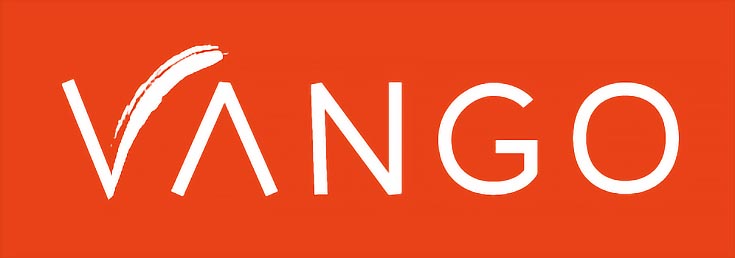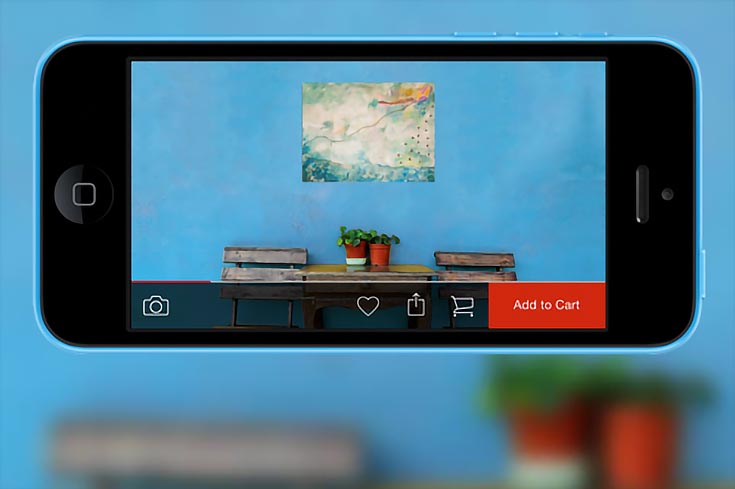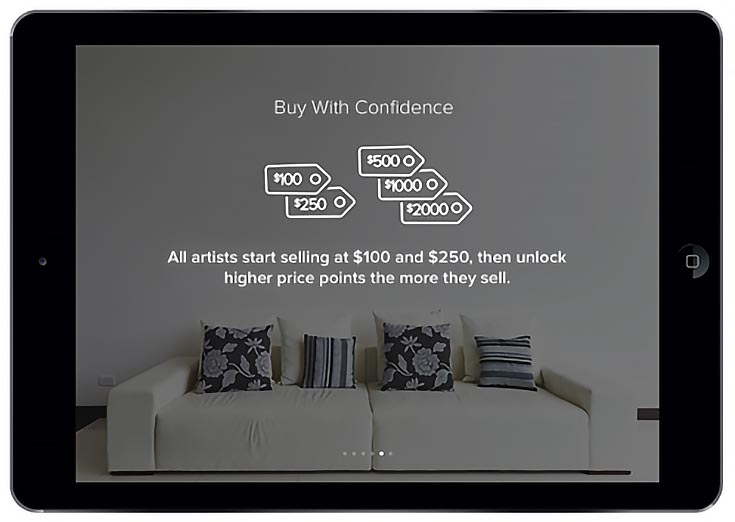The path that many artists dare to walk—from just making art to actually selling it—is fraught with stumbling blocks. Luckily, there are a new wave of smartphone apps trying to make that path a little smoother.
Today I’m looking at Vango, an iPhone and iPad app that attempts to remove anything in the art-buying process which might make buyers nervous about pulling the trigger. Oh, AND they made looking at hundreds of artworks as simple as point-and-swipe.
Here’s how it works:
Potential art buyers download the Vango app onto their iPhone or iPad. The app immediately directs them to take a photo of the room (and wall) that they’re looking to decorate with new, original artwork.
From that point on, it’s easy—Vango uses the colors in the room to algorithmically search through its database of original paintings, and places potential artworks directly on the wall for them to view, scaled to the proper size. It shows new artworks as they swipe from side-to-side, and refines its recommendations as they “favorite” or “share” certain pieces.
If they see an artwork that’s close, but not perfect, they can swipe up and down on their screen to see more artwork by that particular artist. They can also tap to view all the details about the piece, and the artist.
This intuitive method of looking at potential artwork (in the very space it will hang) makes the viewing process seamless and quick—essentially removing “searching” from the task of buying art, and getting straight to the fun part: hanging it on your wall.
Simplified pricing
Viewing art isn’t the only way that Vango makes buying art easy. . . it also uses a simple pricing model, for both buyers and sellers.
If you’re a new seller on Vango, your artwork will be priced at either $100 or $250, no exceptions. Then, you can “unlock” higher price points by making sales. It takes $1000 worth of sales to be able to price your art at $500. After selling $2000 worth of art, you can begin to price your art at $1000. And so on.
For buyers, art pricing often feels subjective, and can be intimidating—Vango’s purpose in creating these pricing rules is to level the playing field somewhat, and hit a “sweet spot” for online purchases. And, of course, it does take the pressure off of YOU to come up with the correct price for your art (although now there’s an app for that, too).
Commission? Of course.
Vango takes a 20% commission on every sale, which actually isn’t too bad, compared to many other selling venues—especially since they use their 20% to cover your artwork shipping, insurance, and taxes, so you don’t have to.
I should clarify: they don’t store your artwork or anything like that, they just email you a prepaid USPS label after every sale, which reduces your cost of shipping somewhat, and gives buyers free shipping. (You’ll still need to pay for packaging, however.)
What else?
Let’s see. . . Vango also gives buyers the option to see only local artwork (i.e., artists near them) which is pretty cool. If you happen to be one of the few artists in your area on Vango, you could almost have your pick of buyers.
There are also no restrictions on selling your artwork elsewhere (or listing your artwork on other services) while it’s being listed on Vango. They just ask that you remove your artwork promptly if it sells elsewhere first.
All in all, Vango is a service I’d recommend trying. Their goal of simplifying the art-buying process is one that’s needed, and ultimately, will help artists as much as it helps buyers.
This post may contain affiliate links.



